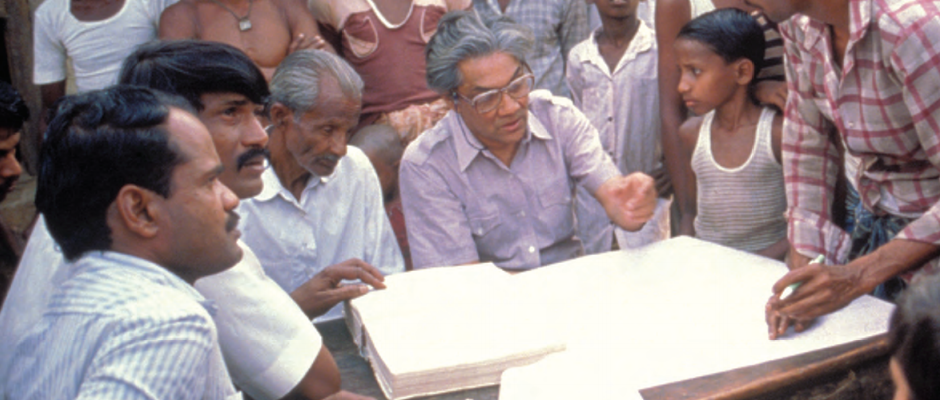
Rajib Timalsina – August 2021
Across the world, large proportions of children are not acquiring foundational reading and numeracy skills, even after spending several years in school. Despite its increasing visibility, this enormous global problem of ‘learning poverty’ has not received adequate attention in educational policy and practice. For example, foundational skills are rarely part of national, regional, or international large-scale assessments, which usually test students’ understanding of content taught in their current grade or stage.
CITIZEN-LED ASSESSMENTS OF EDUCATION
Against this backdrop, citizen-led assessments (CLAs) offer a model not only for generating evidence on children’s foundational reading and numeracy, but also for connecting assessment results to remedial action on the ground. Marguerite Clarke (2015) argues citizen-led assessment is a tool to act as a force for bottom-up accountability and such action that should result in improved education quality and learning. The CLA model is based on four main guiding principles:
- CLAs use oral assessments, conducted one-on-one with each child, since this is commonly accepted to be the most suitable method of assessing foundational reading and numeracy skills.
- CLAs are conducted in households in order to ensure inclusion of all children regardless of enrolment status, type of school, or school attendance on the day of the assessment.
- CLAs assess foundational reading and numeracy skills among school-aged children (typically 5 to 16 years old). The highest level assessed is the country’s curriculum expectations for Grades 2 or 3, regardless of the child’s age or grade.
- CLAs use tools that are quick and simple to administer and understand, which helps facilitate engagement of a wide cross-section of people, such as parents and community members as well as teachers and policy makers
Citizen-led assessments show preliminary promise as a multifaceted tool that can address a range of challenges in a decentralized political system. Findings from a recent CLA in Budanilkantha, Nepal, indicate that central government data is often inaccessible to local governments. So, using national-level indicators at local level is not effective in the Nepali context. The local bodies are the implementers on the ground and the access to data is one important disconnect between the global and local. Citizen led assessments can be a cheap and effective way to bridge this gap.
CITIZEN-LED ASSESSMENTS: THE ASER NEPAL EXPERIENCE
In 2016, a team led by me mobilized 65 young volunteers to gather data from 30 rural villages of Parsa district. In 2017, a similar team mobilized 193 young volunteers to gather data from 119 schools and 3820 households in 13 wards of Budanilkantha local government unit in suburbs of Kathmandu, Nepal. Methodologically, both the citizen-led assessments from 2016 and 2017 followed quantitative learning assessments influenced by the Annual Status of Education Report (ASER) Survey model.
The motivation to implement the ASER Nepal partnership model is multifaceted. The mayor, for example, saw the ASER model primarily as a way to fulfil a campaign pledge he had made to provide local youth with real-world skills that would increase their employability. The approach of assessing children in the home also provided an opportunity for the mayor to reach and demonstrate to voters that his government was taking action to improve education.
Another important factor for the municipality was the local relevance of the ASER approach. As an experienced local leader said, “Many people from outside come and do surveys but I don’t know why it matters in our locality. I will support you, because our own young people must learn this skill of learning assessment. Maybe it will put something in their pockets in the future.” This statement demonstrates the success of the ASER Nepal partnership model against the two goals of mobilizing and upskilling local youth, and collecting data on local children’s learning levels in their homes in order to engage with and improve education in the municipality.
The introduction of new education policies at the local government level, based on the ASER findings, show further proof of the success of the ASER partnership model. Highlighting the politically expedient opportunities of the partnership model, including local relevance and ownership – that is, mobilizing and upskilling local youth to implement the assessment under the patronage of the local government; generating large-scale awareness for issues of education in the community; gathering evidence on local children’s learning levels to develop strategies, policies, and processes to improve learning – has been important to gain buy-in for undertaking ASER in Budanilkantha.
As a result, the idea of leveraging citizen volunteers to work on local issues was later internalized by the municipality. The municipality started Yuwanilkhanta, a program that recruited youth to assist the local government on myriad tasks ranging from environmental issues to higher education. The program, inspired by the observations of the ASER partnership process, was led by the staff member of the mayor’s secretariat who initially advocated for ASER. In addition, several of the ASER Budanilkantha quality monitors approached the mayors of their municipalities with proposals to conduct ASER.
An important observation and learning from the ASER Nepal partnership model was the missed opportunity to create sustained engagement of the local youth with local families, schools, and municipal stakeholders about the findings on children’s learning levels and resulting recommendations to improve education. Many youth assessors were highly motivated to continue working on improving the learning of children when they observed the low learning levels. One assessor said to an ASER trainer, “I was shocked that the children who live in a house I pass every day on my way to college can’t even recognize the letters of the alphabet. I thought everyone who went to school could do that. How is this possible? What can I do about it?”
Future implementations of the partnership model should develop a communications and engagement strategy from the outset. This could include, for example, another local partner or NGO with a focus on continued advocacy at both government and grassroots levels to leverage the young assessors’ role and enable engagement beyond the assessment to improve education at all levels.
CONCLUSION
Altogether, the positive experiences of the municipal level ASER in Budanilkantha have led to the conclusion that the ASER Nepal partnership model is a successful strategy to tackle education issues at both the local government and grassroots levels. In the Nepali context, socially active youth and young people who study in the capital have credibility in their local neighborhoods, and hence can make a difference. At the same time, local governments are responsible for education policy, and have the power to initiate interventions to improve education.
Read the working paper: Rajib Timalsina. 2021. Local Perspectives, Global Goals: Reflections from Citizen-led Assessments on Responsive Local Governance in Improving Learning Outcomes in Nepal. Working paper.
Read the report: Annual Status of Education Report (ASER). Budhanilkantha 2074. From Evidence to Action.
Rajib Timalsina is an Assistant Professor at Tribhuvan University, in Kathmandu, Nepal. A longer version of this blog was submitted as part of LPSA’s Outstanding Decentralization Paper Awards 2021/22 (Asia Region winner). The blog has been edited for length.
Photo credit/ copyright: Aisha Faquir/World Bank. Young children play outside after the school day ends in rural Nepal. Photo used under Creative Commons license (CC BY-NC-ND 2.0).





